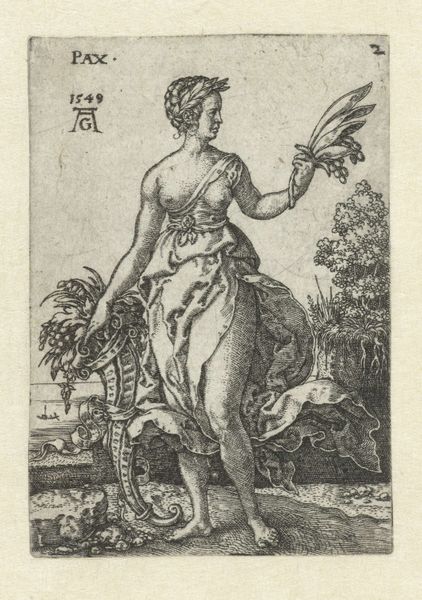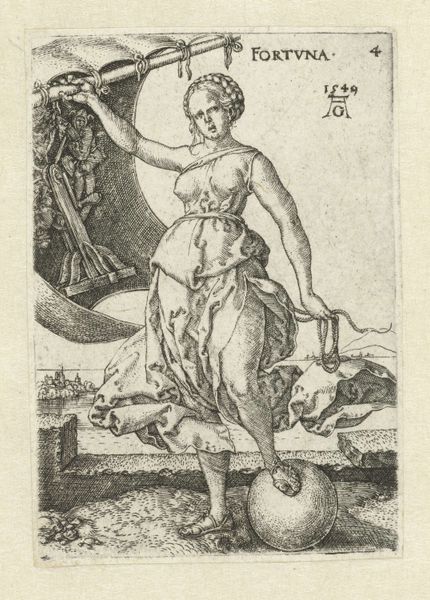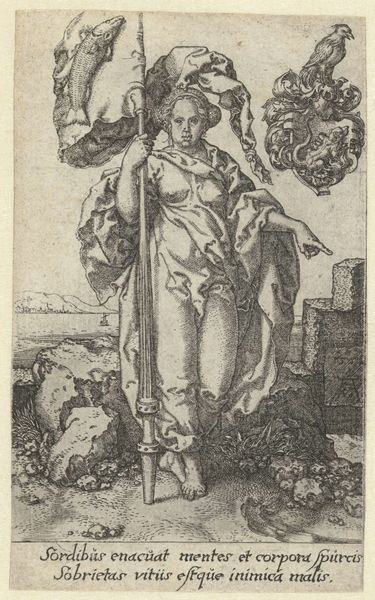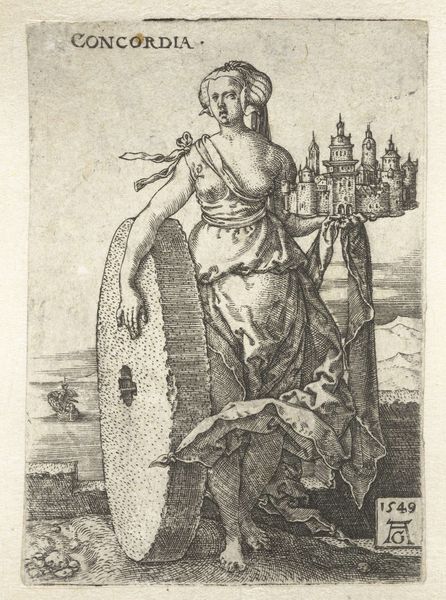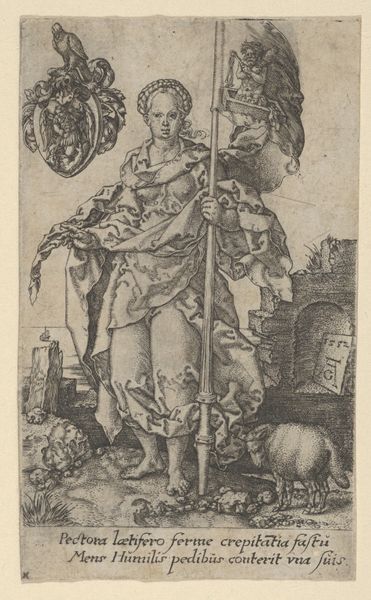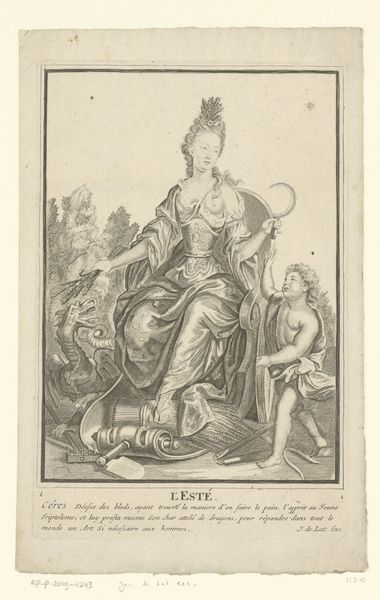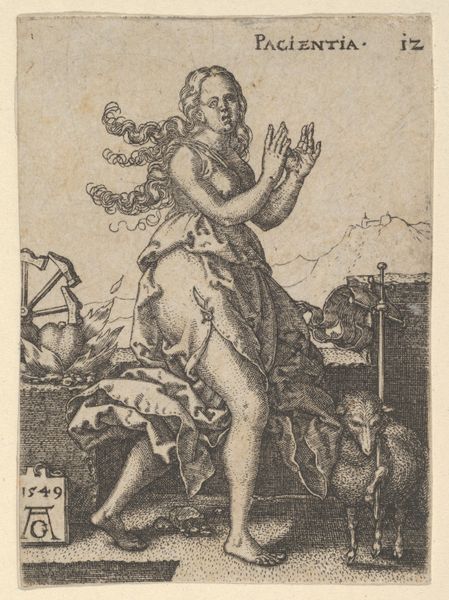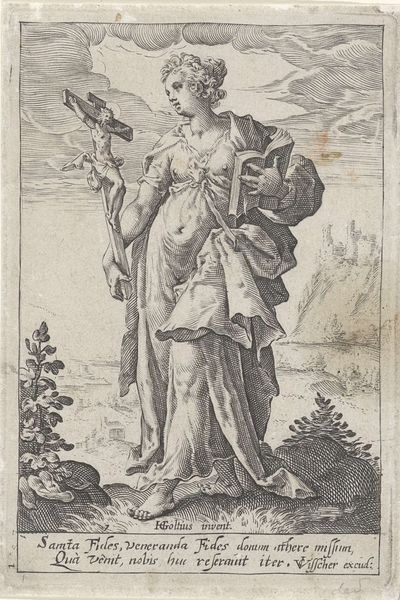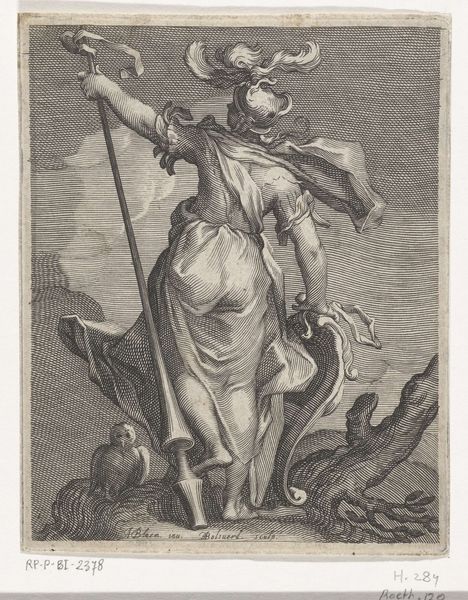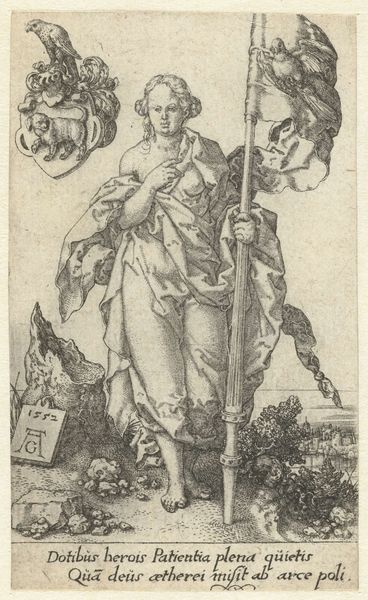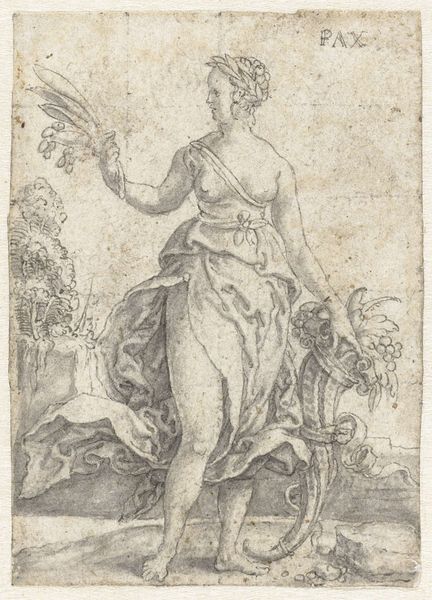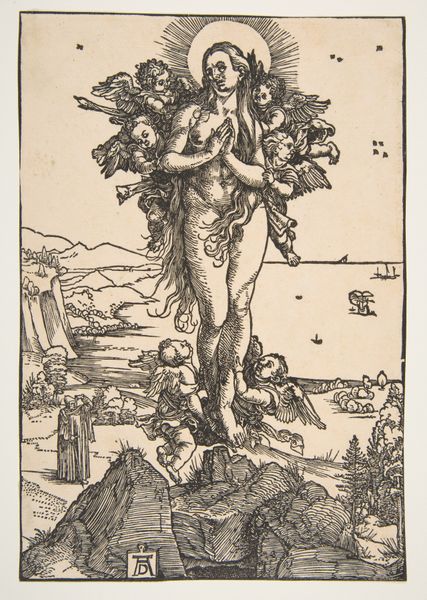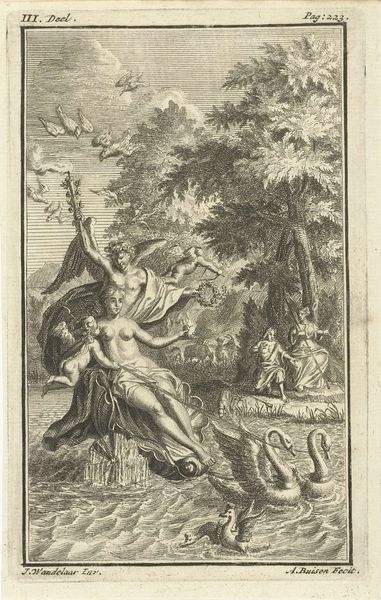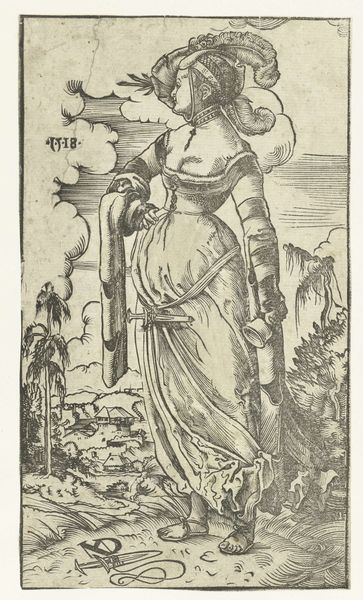
print, engraving
#
allegory
# print
#
old engraving style
#
mannerism
#
figuration
#
engraving
Dimensions: height 70 mm, width 49 mm
Copyright: Rijks Museum: Open Domain
This engraving, Wellust, which translates to 'Lust' was made in 1549 by Heinrich Aldegrever, a German artist known for his intricate prints during the Renaissance. Aldegrever was part of a generation grappling with religious reform and shifting social values. Here, his work engages with the visual language used to depict the seven deadly sins. The figure of Lust is allegorical. She's adorned with a crown of leaves and partially exposed breasts, and she holds a spiked cylinder, while accompanied by a boar. The print reflects the era’s complex attitudes towards female sexuality, depicting women as both alluring and morally suspect. But it might also be a comment on societal excesses in general. Aldegrever presents a narrative that invites us to consider the relationships between desire, morality, and social order during the Reformation.
Comments
No comments
Be the first to comment and join the conversation on the ultimate creative platform.
